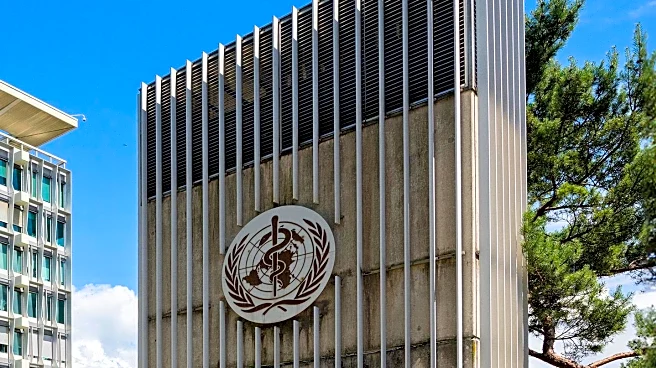What's Happening?
Tuberculosis remains a significant global health challenge despite the availability of effective treatments. In the United States, the disease is relatively rare, with provisional data indicating just
over 10,000 cases in 2024. However, in lower-income countries, tuberculosis continues to spread actively, with over 10 million people diagnosed annually worldwide. The persistence of the disease is attributed to various factors, including socioeconomic disparities and healthcare access issues. Author John Green, in his book 'Everything is Tuberculosis,' explores the historical spread of the disease and its ongoing impact.
Why It's Important?
The continued prevalence of tuberculosis highlights critical gaps in global healthcare systems, particularly in lower-income regions. Despite medical advancements, socioeconomic factors such as poverty, inadequate healthcare infrastructure, and limited access to treatment contribute to the disease's persistence. Addressing these challenges is crucial for reducing tuberculosis-related mortality and improving global health outcomes. Efforts to eradicate the disease require comprehensive strategies that encompass medical, social, and economic interventions.
What's Next?
Efforts to combat tuberculosis are likely to focus on enhancing healthcare access and infrastructure in affected regions. International organizations and governments may increase funding and support for tuberculosis prevention and treatment programs. Additionally, public health campaigns aimed at raising awareness and reducing stigma associated with the disease could play a vital role in encouraging individuals to seek treatment. Collaboration between healthcare providers, policymakers, and communities will be essential in developing effective strategies to eradicate tuberculosis.
Beyond the Headlines
The fight against tuberculosis underscores broader issues related to global health equity and the need for sustainable healthcare solutions. The disease's persistence in lower-income countries reflects systemic inequalities that affect access to medical care and resources. Addressing these disparities requires a commitment to long-term investment in healthcare infrastructure and policies that prioritize vulnerable populations. The tuberculosis challenge also highlights the importance of international cooperation in tackling global health threats.












